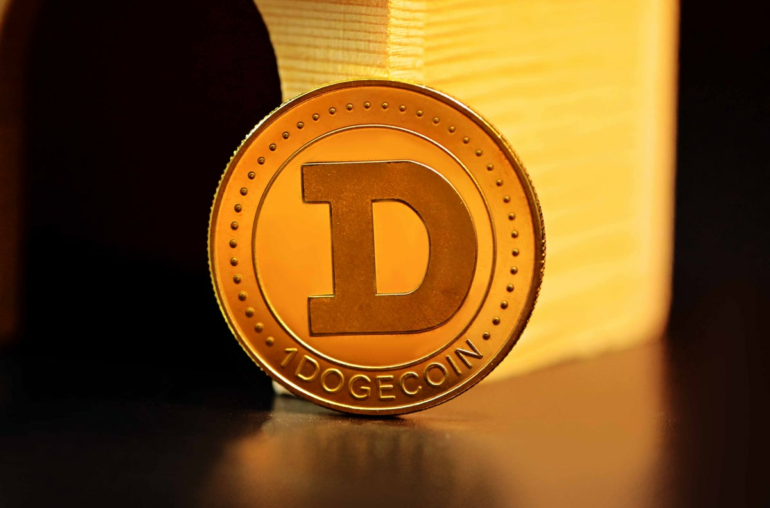Agenda-setting intelligence, analysis and advice for the global fashion community.
When Tiffany & Co. released 250 “NFTiffs” earlier this month, they promptly sold out, even at a whopping 30 ETH each — or about $51,000 at the time. Only available to holders of CryptoPunks NFTs, they entitled buyers to custom pendants of their punks.
A week later, the auction of an NFT version of Jason Wu’s 2009 Inaugural Ball gown for Michelle Obama, created in partnership with virtual fashion brand DressX, ended without receiving the minimum bid of 8.5 ETH. The buyer would have also received two tickets to Wu’s upcoming show at New York Fashion Week. (The gown sold nearly two weeks later for 6 ETH, according to DressX, which said via a representative that offers came in afterwards and Wu’s team took some time before accepting one.)
Since fashion brands across the spectrum from Adidas to Diesel to Givenchy and Prada began releasing NFT collections, some have had outstanding successes, like Dolce & Gabbana’s nearly $6 million sale of nine NFTs last October. Others have fallen flat or missed expectations. Several NFTs from Rebecca Minkoff’s second collection, titled “Dunamis,” remain unsold months after they were listed.
Measuring success for these projects is difficult since each tends to release different numbers of NFTs at different prices and with different goals, like short-term sales versus long-term brand building. Some clearly resonate, others may generate some cash but quickly fade from memory and others might not sell at all.
But the best NFT projects have a few things in common, like creativity, appeal to a clear audience and value beyond the price. Where brands might have gotten away with selling just about any NFTs during last year’s frenzy, today their quality and utility matter more as NFT prices and trading volumes plunge and their novelty has long since worn off.
Despite the downturn, more brands keep jumping into the market. Lacoste introduced NFTs in June, Puma just revealed its own project and NYFW has announced a new NFT partnership with a number of designers.
While brand recognition plays an undeniable role in which ones connect, experts say there’s much more involved in a successful fashion NFT collection. (Among the most popular fashion NFT collections is the Adam Bomb Squad, created by niche streetwear label The Hundreds).
“I do not think that web3 is made only for large brands with established audiences,” said Brian Trunzo, the metaverse lead at Polygon Studios, the consulting arm of the Polygon blockchain.
One variety of NFT struggling to sustain interest is virtual renderings of clothing primarily meant as collectables.
“Collectability for collectability’s sake… I think those days are more or less numbered,” Trunzo said.
He described that model as “NFT 1.0.” While they sold well enough back when speculators were snatching up everything they could in hopes of flipping it for a profit, the crypto downturn cleared many of those buyers out of the market.
Now brands need to make sure their NFTs are offering more utility and value, such as the ability to claim an exclusive physical item or use in the brand’s broader ecosystem of products and experiences. RTFKT, for instance, releases virtual goods to be worn by the CloneX avatars it created with artist Takashi Murakami or redeemed for a physical version. Brands like The Hundreds and Adidas are using NFTs as a form of loyalty programme. 9dcc, the new fashion line from NFT figure Gmoney, has NFTs baked into the business model.
Of course, that additional value also has to justify the price tag attached. Even entry to an event like a fashion show may not be enough if buyers don’t feel it’s worth the cost. Prior to the pandemic, an offshoot of the organisation that runs NYFW was selling show tickets to the public that topped out at $1,500 — about a tenth of the minimum bid for the NFT from DressX and Jason Wu that included tickets to Wu’s show.
“Everyone is looking for, ‘Why do I get that NFT, how is it increasing in value and how do I get more out of it than I paid?’ That’s fair,” said Juergen Alker, head of Highsnobiety’s NFT studio, which recently released its own small NFT collection, called “Not In Paris,” and advises brand partners on web3 projects. (Members of Highsnobiety’s Discord have generally responded well to its NFT project.)
The NFT itself doesn’t literally have to yield a financial profit and may not even be the main attraction. A common way fashion companies give their NFTs value is by letting holders claim physical goods, like the tracksuits and other items Adidas gave to its “Into the Metaverse” NFT holders or the ceramic figurines accompanying Gucci’s NFTs with collectable maker Superplastic. In the case of Tiffany’s NFTiffs, the token was a tool CryptoPunk owners to buy a unique item made with Tiffany’s materials and craftsmanship they wouldn’t have had access to otherwise.
Even the promise of future rewards can be enough, as long as customers believe what they’ll receive over time will be worth the initial price of the NFT.
Because the market for NFTs is still a niche, fashion brands have often seen better results by appealing to the crypto community. The non-web3 public also faces barriers to purchasing because of the steps typically required, including getting a crypto wallet, obtaining cryptocurrency and going through what can be a complex minting process to claim them.
“Without the web3 community, we would’ve probably sold only 10 percent or 20 percent of the NFTs,” Alker said about Highsnobiety’s NFT collection. “I think every brand has the same issue.”
One way brands have appealed to these shoppers is with a playbook fashion perfected: collaborations. Adidas partnered with Bored Ape Yacht Club and Gmoney on its NFTs. Gucci has teamed with 10KTF, known for crafting unique digital accessories, and now Puma is following suit. Nike went a step further and acquired RTFKT.
Trunzo said it can be a great short-term strategy for fashion brands to create their first connections with web3 customers, though they have to show they’re genuinely interested in learning and being part of the space.
Even so, brands shouldn’t forget their core “web2″ audience. Alker pointed out that bringing loyal customers into a space filled with buyers interested in turning a profit, rather than the brand itself, can help build a stronger foundation. While it can be hard to include them because of web3′s laborious user experience, Trunzo offered the example of MAC Cosmetics’ NFTs with Keith Haring, which allowed shoppers to transact with a credit card and then receive an email letting them claim their NFT.
“If you just drop an NFT and have no story and no fantasy around it, it’s not going to do much better than a boring collection that you’re dropping without a story,” Alker said.
Gucci and RTFKT have successfully teased launches in ways that left customers eager to learn more. Gucci’s 10KTF collaboration centred on creative director Alessandro Michele visiting a craftsman called Wagmi-san in the fictional city of New Tokyo. RTFKT had fans solve puzzles for weeks to reveal what was inside a mysterious cube called MNLTH. (It was the brand’s first digital sneakers with Nike.)
“The best projects are those which take an existing brand somewhere new but recognizable,” said Ian McMilan, chief growth officer at Mojito, a technology platform that specialises in helping brands such as Sotheby’s launch web3 projects. “Show me something new about you that feels still like you.”
McMilan added that brands see results with a thought-out marketing plan that includes what he calls “crescendo moments.” A short-term campaign could have two or three, like the reveal of additional benefits the NFT will provide, while brands using NFTs as long-term loyalty programmes might want five or so a year. He warned, however, that brands should be cautious about overpromising and underdelivering or they risk setting up customers to be disappointed.
Maybe the worst course fashion brands can take is releasing NFT collections that just look like a cash grab. One of the biggest challenges for brands, in fact, is what happens after the initial sale. If they’ve positioned the NFT as the key to entry into a community, they then have to keep that community alive and engaged.
“You need to constantly be injecting energy into this community by creating new value, and so you need a constant drip of content, of new NFT drops, of new utility,” McMilan said.
Trunzo highlighted Adidas as one brand that has done a good job, even if it’s had stumbles along the way. In his view, it devised a phased plan and is steadily executing it, regularly providing rewards without becoming fixated on the short-term incentives other brands can get caught up in, like the value of its NFTs on the resale market.
That doesn’t mean the only successful projects are open-ended. McMilan said more brands should think of how they can use NFTs for a single, defined campaign, as Tiffany did. The point is to have a clear aim and to communicate it to the intended audience.
“If you think NFTs are a marketing tool, then it’s going to fail,” Alker said. “If you think NFTs and web3 are going to be part of your future business model, then you can succeed.”
© 2021 The Business of Fashion. All rights reserved. For more information read our Terms & Conditions



